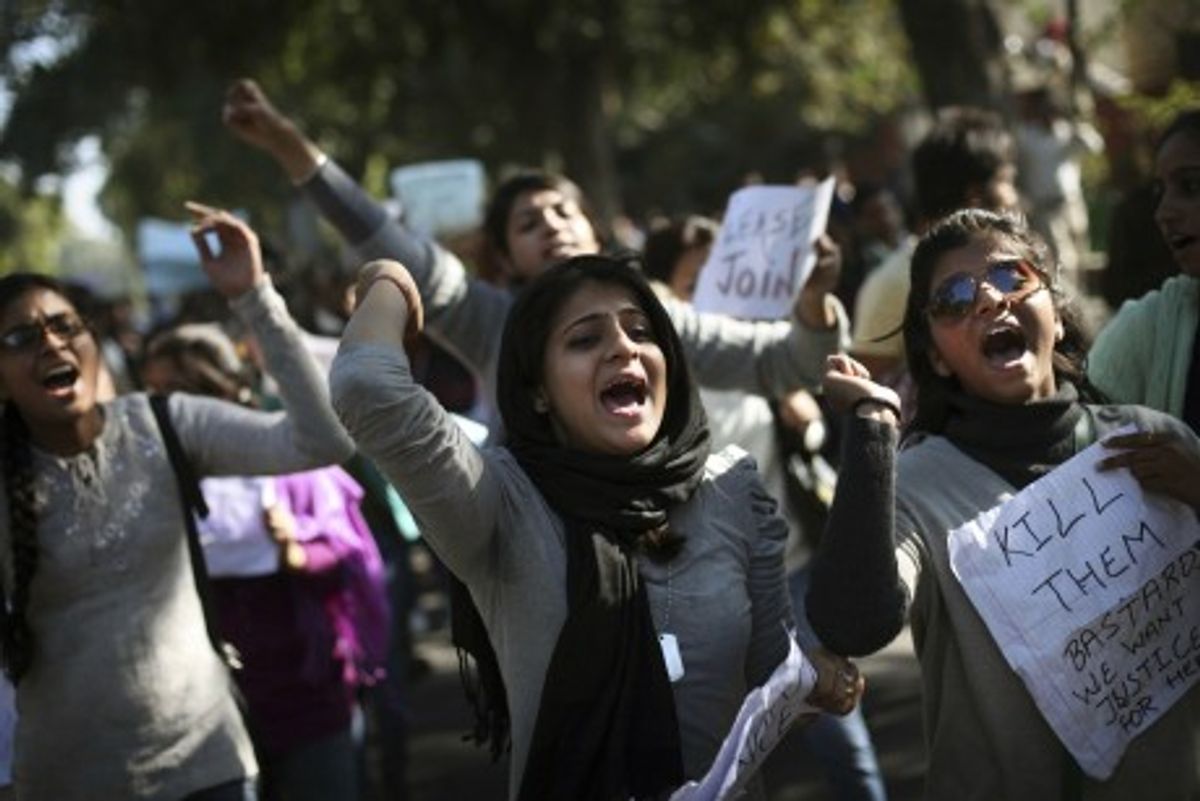 Safety while traveling in cities has been an especially stubborn obstacle for women in India, as an increasing number of them join the workforce and are out later at night.
Safety while traveling in cities has been an especially stubborn obstacle for women in India, as an increasing number of them join the workforce and are out later at night.
But the brutal gang rape of a 23-year-old woman on a bus in Delhi on Dec. 16 has now thrown the issue of women's safety in India into sharp relief.
The victim, who passed away Saturday from injuries sustained during the assault, had boarded a privately operated bus with a mansaid to be her fiance.
The BBC had reported the vehicle was a "white line" bus, one of several services run by private operators to supplement the city's public bus network.
According to the police, the bus did not have a valid permit at the time the woman and her friend were picked up, said The Times of India. Traffic police also found records that showed the bus had been impounded six times between 2011 and 2012.
Currently, one of the measures employed by public transportation systems in many Indian cities to keep women safe is quite antiquated: sex segregation.
The measure was taken to deal with some grim statistics. Although the number of working women in India roughly doubled between the mid-1990s and 2009, between 2003 and 2007 reported rape cases rose by more than 30 percent, while kidnapping or abduction cases rose by more than 50 percent, according to The New York Times.
A survey by the Associated Chambers of Commerce and Industry of India (ASSOCHAM), released in December 2012, showed that 92 percent of working women in India said they felt insecure, especially at night, in all major economic centers across the country, Inter Press Service reported.
The survey showed that New Delhi topped the list, with 92 percent of the women who responded complaining about feeling unsafe, while 85 percent of women in Bangalore and 82 percent of women in Kolkata said the same.
To combat the problem, The New York Times wrote, a 2009 pilot program for female-only commuter trains was introduced in four of India's largest cities — New Delhi, Mumbai, Chennai and Kolkata.
The Bangalore Metropolitan Transport Corporation also introduced female-only buses six or seven years ago, according to IBNLive. The pink colored buses were labeled "Women's Special," and were meant to cater to women during peak hours in the morning and evening. However, the system was not without problems: The buses ran infrequently, and male passengers often boarded them regardless.
Companies that employ female workers for night shifts at call centers often provide their own private shuttles for both men and women. In 2005, the brutal murder of Pratibha Srikantha Murthy, a female worker in Bangalore, led to the tightening of security measures on company shuttles, The Times of India said.
In Bangalore, the new safety measures included ensuring that a female employee would not be dropped off last and implementing an ID card system to keep track of drivers.
One of ASSOCHAM's recent safety recommendations was to equip public vehicles with GPS systems that women could use to call for help when in trouble.
In the wake of the Dec. 16 attack in Delhi, the Indian government has also promised to take preventive measures. The measures include night patrols, checks on public and private bus operators, and a ban on vehicles with tinted windows or curtains, according to Al Jazeera.
However, these measures are a temporary patch, a small bandage on the gaping wound of societal traditions that Indian analysts say are rooted in misogyny, patriarchy and repressive attitudes. And even if the segregation is meant to benefit women, keeping them separate remains fundamentally unequal.
In October, Sarah Goodyear wrote in The Atlantic about her trip to Gurgaon, just outside New Delhi:
In the days that followed, I kept bumping into the sensation that I was being quietly but definitely segregated from men, put in a special class that was weaker and needed protection. This was particularly incongruous since so many of the people I was meeting were well-educated women who ran their own businesses, employed many people, and drove their own cars with aplomb through some of the most harrowing conditions that I have ever witnessed.



Shares